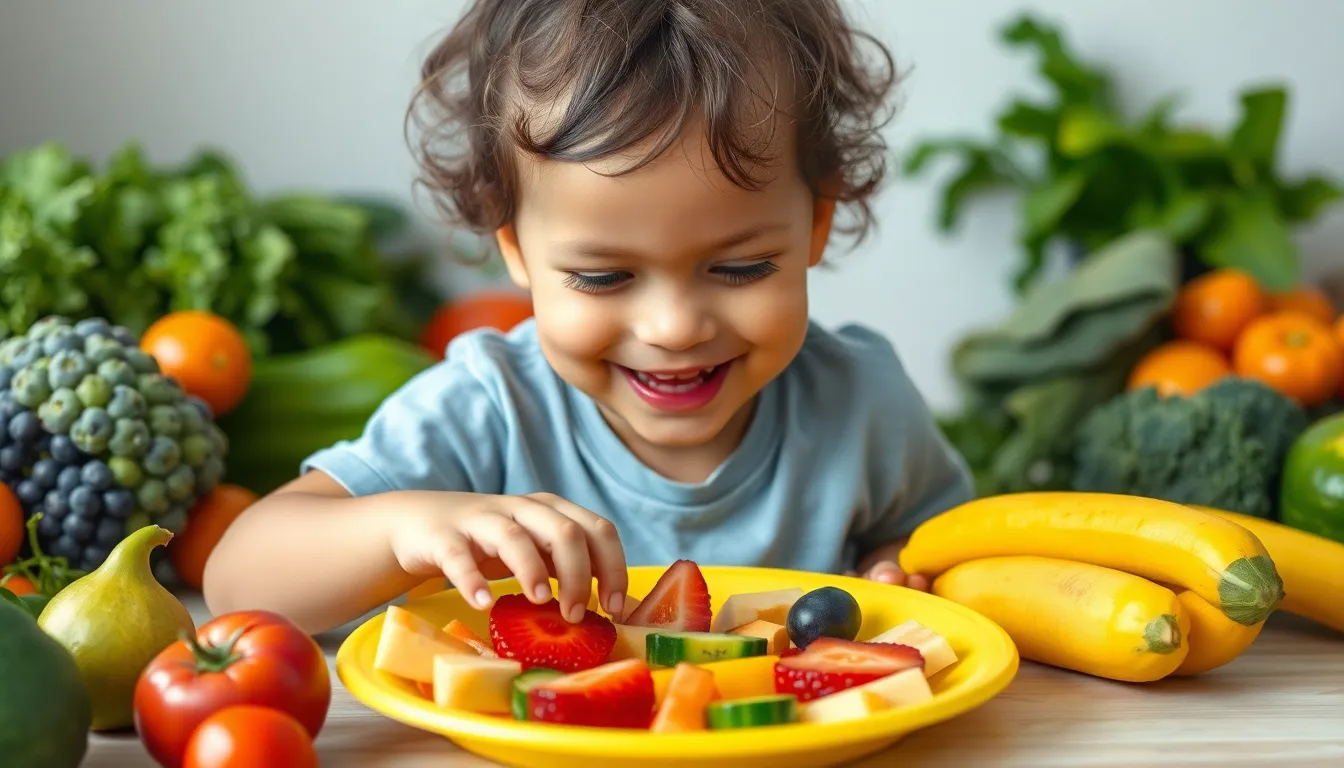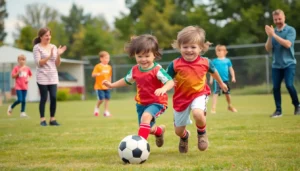Table of Contents
ToggleTransforming mealtime into a masterpiece, kids food art brings creativity and fun to the dinner table. Picture a plate where broccoli becomes a tree and mashed potatoes morph into fluffy clouds. It’s not just about nutrition; it’s about making food an adventure. Who knew carrots could be so much fun?
Overview of Kids Food Art
Kids food art involves transforming meals into delightful creations. Parents and caregivers encourage artistic expression by arranging food in playful shapes and designs. Various vegetables, fruits, and grains become characters or animals, fostering engagement during mealtime.
Broccoli can resemble miniature trees, while carrots might become the sun. Fruits like bananas serve as friendly dolphins or butterflies in a vibrant salad. Creating these imaginative setups doesn’t just amuse; it promotes healthy eating habits.
Children develop an interest in diverse foods when they see them presented as art. Engaging kids in food preparation enhances their willingness to explore flavors and textures. Simple techniques, such as using cookie cutters, enable families to shape sandwiches or cheese into stars and hearts.
Presentation matters, especially in enticing picky eaters. Colorful arrangements bring excitement, making nutritious meals visually appealing. Some parents utilize themed meals, such as ocean days with seafood and blue foods, drawing inspiration from favorite stories or cartoons.
Collaborative efforts in the kitchen enhance bonding time and foster creativity. Selecting ingredients together encourages children to take part in the cooking process. Meal preparation includes both fun and education, as children learn about healthy choices while enjoying their creations.
Incorporating educational elements, such as discussing colors or counting items, enriches the experience. Observing kids’ responses to creatively presented meals can inform future cooking endeavors. Investing time in food art elevates ordinary dining into a joyful, interactive experience.
Benefits of Kids Food Art

Kids food art provides numerous advantages for both children and parents. It helps make meals fun while enhancing various skills in young ones.
Encouraging Creativity
Creativity flourishes during food art activities. Kids explore their imagination by transforming fruits and vegetables into playful shapes. They learn to express themselves artistically, using edible materials as their canvas. Participating in this process boosts their confidence, especially when they present their creations to family members. Each colorful plate serves as a unique expression, making them eager to invent new designs. Parents can encourage this creative exploration by providing a variety of ingredients. Opportunities arise when kids mix and match while creating characters or scenes. Enhanced creativity leads to innovative thinking, beneficial in various aspects of life.
Promoting Healthy Eating
Healthy eating habits gain support through engaging food art. Meals arranged in visually appealing ways attract children’s attention. Parents notice that imaginative presentations entice picky eaters to try new foods. A fruit butterfly might encourage kids to eat more berries and melons. This strategy lays the groundwork for adventurous eating. Additionally, kids connected with colorful dishes often develop a preference for fruits and vegetables over processed snacks. Education on nutrition naturally integrates into this fun experience. Learning about the benefits of different foods occurs while they participate in creating meals. Ultimately, food art transforms mealtime into a journey of discovery and healthy choices.
Techniques for Creating Kids Food Art
Creating engaging food art inspires creativity and excitement around meals. Various techniques can enhance this experience for both children and caregivers.
Fun Designs with Fruits and Vegetables
Crafting imaginative designs using fruits and vegetables captivates children’s attention. Start by selecting vibrant produce like strawberries, cucumbers, or bell peppers. Making designs like animals or flowers encourages diverse food choices. Cut fruits and vegetables into different shapes using cookie cutters, inspiring kids to explore textures. Arrange these shapes on a plate to create a colorful masterpiece. Kids often enjoy participating in the design process, fostering their creativity. Adding little details like olive eyes or carrot noses enhances the fun and encourages imagination.
Using Edible Paints and Dips
Employing edible paints and dips adds an adventurous element to food art. Natural colorings made from beet juice or spinach can turn ordinary meals into interactive experiences. Using yogurt-based dips flavored with herbs allows kids to decorate their food. Encourage them to use brushes for painting designs on their plates, merging art with nutrition. Mixing different textures makes meals more appealing, enhancing enjoyment and participation. Offering a variety of edible paints allows children to explore flavors while creating their culinary art.
Popular Ideas for Kids Food Art
Several popular ideas for kids food art ignite creativity during mealtime. These ideas encourage children to engage with their food and make eating a festive experience.
Animal Shapes and Faces
Transforming food into animal shapes or faces delights and entertains kids. Using fruits and vegetables, one can create playful designs, such as using blueberries for eyes and a slice of banana for a smile. Cucumbers may form the body, while a carrot can represent the tail, making the meal visually appealing. This playful presentation invites children to enjoy their meals while boosting their creativity. Sharing stories about the animals or assigning names to each creation enhances interaction, prompting kids to explore different textures and flavors.
Themed Seasonal Art
Creating themed seasonal art captivates children’s imagination and aligns meals with holidays. For Halloween, using orange bell peppers shaped like pumpkins or constructing snowmen from mashed potatoes works well. During summer, arranging fresh fruits into colorful beach scenes entertains and promotes healthier eating habits. Each season provides unique inspiration, allowing families to use different ingredients creatively. This approach encourages children to anticipate mealtime, making it exciting and enjoyable. Parents can introduce festive themes by discussing the significance of each holiday, fostering a deeper connection to food and celebration.
Kids food art transforms mealtime into a delightful experience that sparks creativity and encourages healthy eating. By turning ordinary ingredients into imaginative shapes and designs, parents can engage their children in a fun and interactive way. This approach not only makes meals visually appealing but also fosters a sense of adventure around food.
When kids participate in the preparation and presentation, they develop a greater interest in trying new flavors and textures. The joy of creating edible art enhances their culinary skills and boosts their confidence. Embracing this playful method can lead to healthier eating habits and a lifelong appreciation for nutritious foods. Ultimately, kids food art is more than just a meal; it’s an opportunity for creativity, bonding, and joyful exploration.






